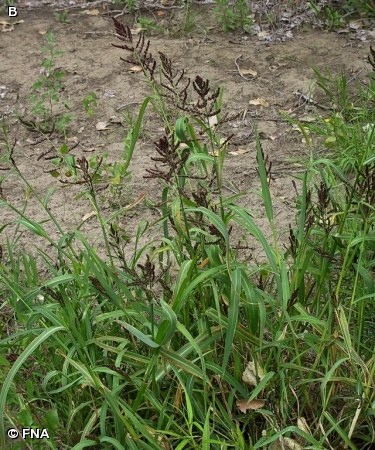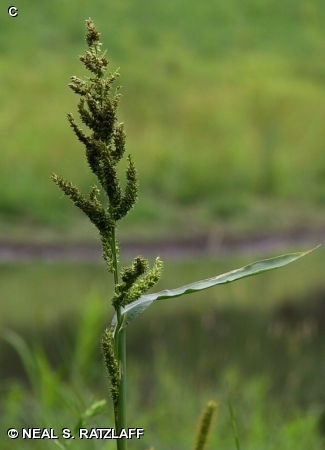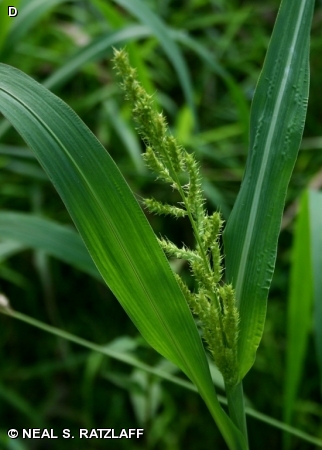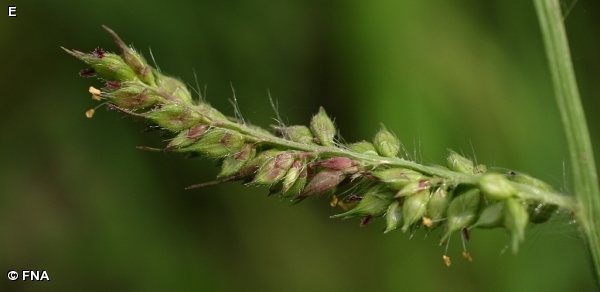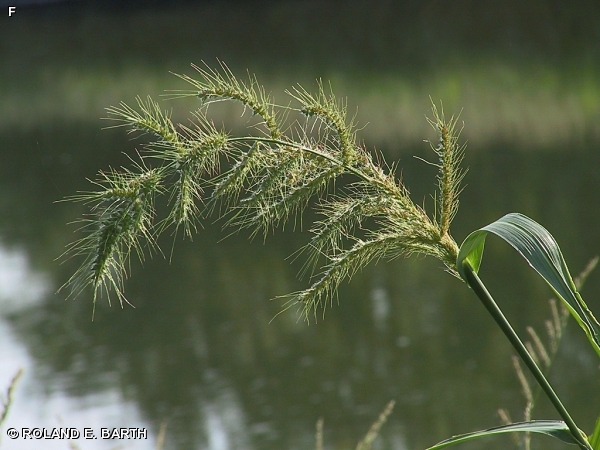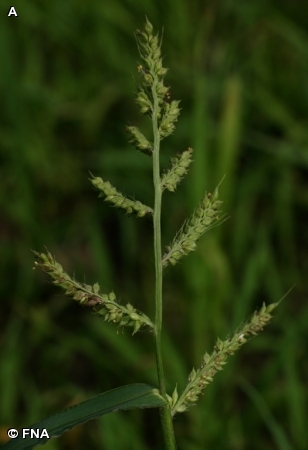
An annual introduced from Eurasia, this weedy plant has a stout reclining-to-erect stem from 1 to 3 1/2 feet tall. The flat, usually hairless spreading leaves are from 3-12 inches long and up to 1/2 inch wide with a conspicuous white midvein (D). The flower cluster is an erect or nodding green-to-purple panicle from 2-10 inches long with 5-12 appressed-to-spreading branches (A,B). The densely flowered branches bear large numbers of overlapping spikelets arranged along one side of the stem (E) and awns or bristles of variable length and density. A population with particularly long awns is present on the Fontenelle Forest floodplain (F).
Moist, disturbed areas. At Fontenelle Forest, Barnyard Grass is locally common along the edge of the Great Marsh east of the blind. At Neale Woods it is locally common around the margin of the pond in Jonas Valley. Flowering occurs from July to September.
A species which is native to North America, Rough Barnyard Grass (Echinochloa muricata), occupies similar habitats and is separated only by microscopic differences in the tip of the fertile lemma. At Neale Woods it grows along the edges of Rock Creek next to the Missouri River Ecology Trail bridge (D).
Barnyard Grass is a prolific seed producer (up to 40,000 per plant) and an important food source for birds, especially waterfowl. The seeds of the native species were a food source for Native Americans.
Other common names include Wild Millet, Japanese Millet, Cockspur and Watergrass.
The content of NatureSearch is provided by dedicated volunteer Naturalists of Fontenelle Forest who strive to provide the most accurate information available. Contributors of the images retain their copyrights. The point of contact for this page is: Neal Ratzlaff.

